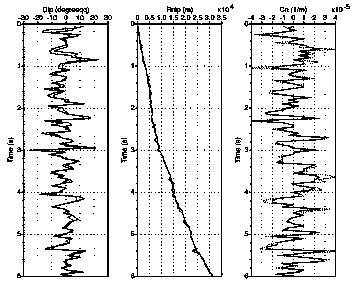Method for optimizing stacking parameters of seismic common reflection surface
A common reflection surface and reflection surface technology, applied in the field of geological survey, can solve the problems of relatively low efficiency, falling into local minimum, and limiting the popularization and application of CRS technology
- Summary
- Abstract
- Description
- Claims
- Application Information
AI Technical Summary
Problems solved by technology
Method used
Image
Examples
Embodiment Construction
[0046] The specific implementation manners of the present invention will be further described in detail below in conjunction with the accompanying drawings and embodiments. The following examples are used to illustrate the present invention, but are not intended to limit the scope of the present invention.
[0047] see Figure 5 As shown, the present invention provides a method for realizing the optimization of seismic common reflection surface stacking parameters, comprising the following steps:
[0048] Step S1, acquiring seismic data, and calculating and obtaining the radius of curvature of the wavefront of the initial reflection point, the radius of curvature of the wavefront of the initial reflection surface, and the initial dip angle based on the seismic data;
[0049] Step S2, through the initial reflection point wavefront curvature radius, the initial reflection surface wavefront curvature radius and the initial dip angle, based on the objective function, obtain the o...
PUM
 Login to View More
Login to View More Abstract
Description
Claims
Application Information
 Login to View More
Login to View More - R&D Engineer
- R&D Manager
- IP Professional
- Industry Leading Data Capabilities
- Powerful AI technology
- Patent DNA Extraction
Browse by: Latest US Patents, China's latest patents, Technical Efficacy Thesaurus, Application Domain, Technology Topic, Popular Technical Reports.
© 2024 PatSnap. All rights reserved.Legal|Privacy policy|Modern Slavery Act Transparency Statement|Sitemap|About US| Contact US: help@patsnap.com










